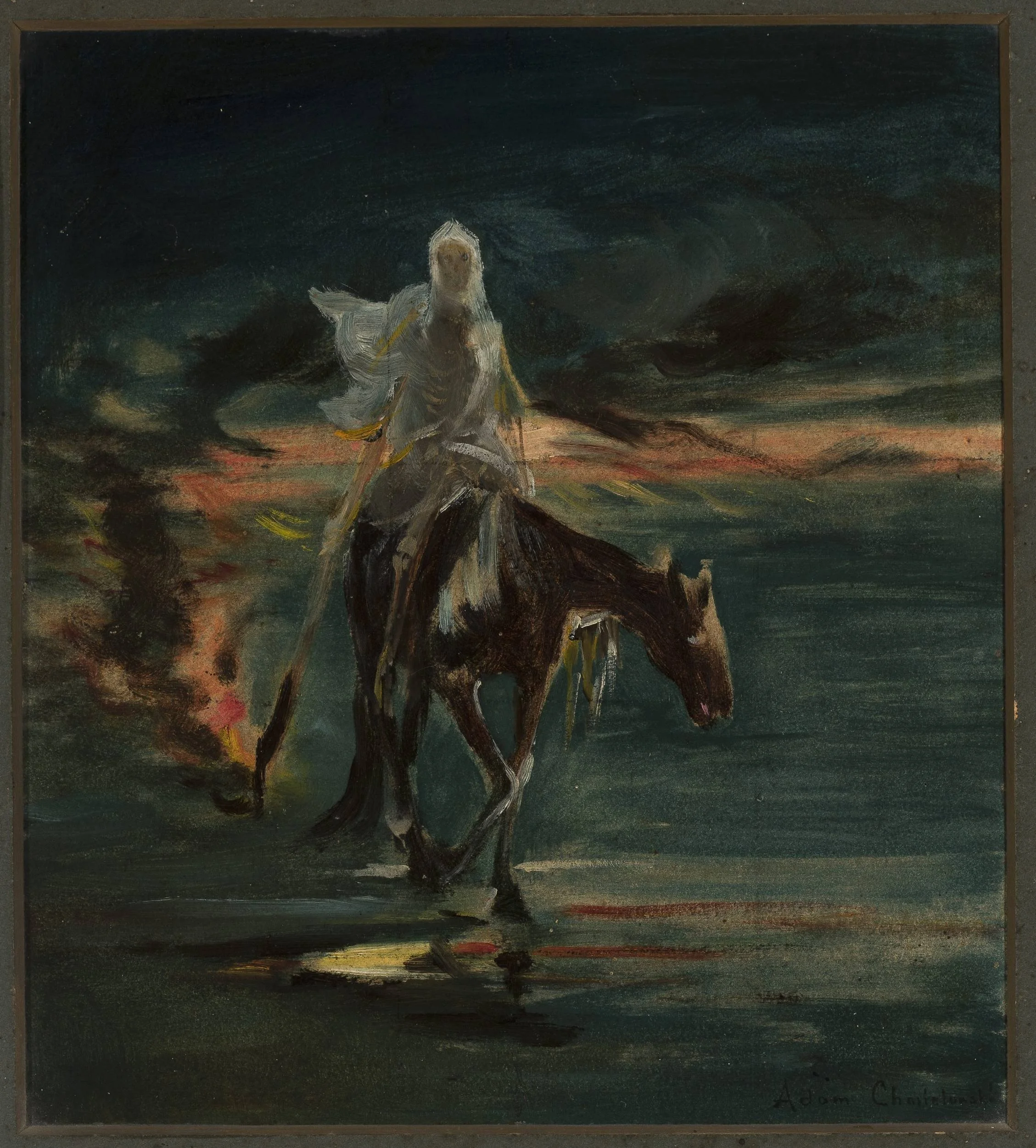Ghost Riders: Forgotten Hauntings from 17th-Century Wiltshire
In about 1671, parson Symonds, who was then serving at All Saints church, Garsdon near Malmesbury, was riding home late when a ghostly spectre leapt up behind him on his horse. The spectre rode pillion, pressed close behind the terrified churchman, until they came to the parsonage house, where it leapt off. The apparition then turned to face Symonds and stared fixedly at him with an open mouth. No doubt the parson reacted in terror, but the moment allowed him to identify the ghost as that of John Estcourt, a gentleman from Malmesbury, who had died several years before. Perhaps the phantom wanted to be seen and recognised, but he said nothing before departing. Although John Aubrey who recorded the tale does not mention it, when Estcourt died there was a bitter dispute over his inheritance between his widow, Sarah, and his nephew, Edmund. Was his ghost trying to convey something to the parson?
Aubrey, who noted the story in an unpublished manuscript, collected such supernatural tales but was nonetheless uncertain about the parson's account. Symonds was, he said, 'a lusty strong fellow' presumably not someone nervous or hysterical and prone to flights of imagination - someone who even when terrified was likely to be a reliable witness. His position, he observed, as a churchman 'may [also] give some authority to his testimony'. And yet, Aubrey noted, too, a French saying that drunk men saw devils - a sceptical observation that cast doubt on the story. But then he concluded the story with a strange detail- ‘the tale seems to bee farther corroborated by his horse, that trembled and sweat, when he came home and continued to do so the next day, and would not eat his oates.’ The horse could not lie or get drunk, its fear manifest in the trembling and sweat was genuine.
Aubrey did not leave the topic of ghostly riders there but continued by briefly describing a similar story. One about Mr Ferdinando Saintlow of Knighton in Broad Chalke parish, where Aubrey owned a farm. As a 'young gentleman' (though he would have been about 29 if Aubrey's date is correct) in ‘about 1628’, Saintlow was riding from Salisbury at night, presumably home to Knighton some 7 miles distant. He ‘fancied that a spirit rode behind him’. Saintlow ‘was so frightened that he took to his bed and died.’ In this account Aubrey was careful in his wording. Saintlow did not say he saw anything, he merely believed something was there. Yet this unseen, possibly imagined phantom proved far more deadly than Symonds' visible apparition.
Aubrey probably did not entirely believe parson Symond’s account, but by placing the two stories made a powerful point, whether or not ghost riders were real, the fear they inspired was demonstrably lethal.
